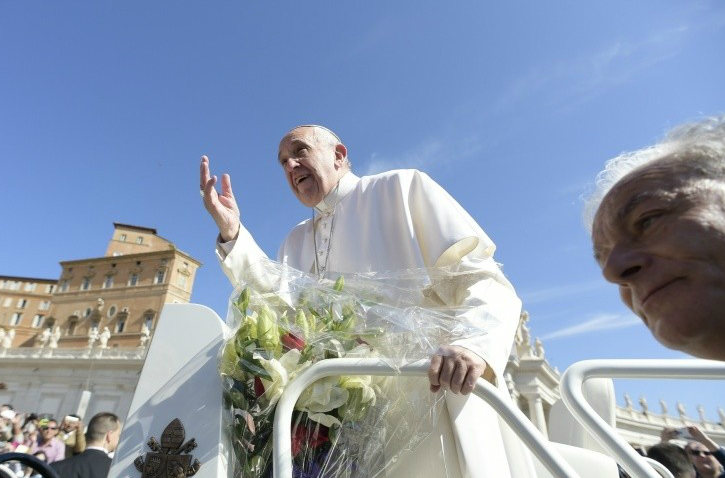Profoundly significant was the blessing imparted by Pope Francis today, during the General Audience in St. Peter’s Square, to the statue of Saint Anthony of Padua from the parish of Cassino of the same name, in the municipality of Basso Lazio.
In fact, the statue evokes salient moments of the history of the last century as well as the bond between this Benedictine city and popular religiosity. Here, on September 10 every year, the hands of the clock go back in time. An atmosphere of deep emotion pervades the church of Saint Anthony of Padua, in the city center, crowded with people who rush to remember an event that marked tragically the destinies of Cassino and of the whole of Italy.
It was September 10, 1943, just two days before the announcement was made of the armistice signed in great secrecy by Marshal Pietro Badoglio with the Anglo-American Armed Forces. An act that deprived Italy of a political guide, which destabilized the army committed in several war campaigns, and left the population at the mercy of the conflict.
Cassino also felt its consequences. That Friday, September 10, 1943, at 10 o’clock in the morning, Anglo-American aviation launched a sudden bombardment on the locality of Basso Lazio. The population was caught unprepared. Homes and public buildings suffered serious damages, and 105 people were killed.
And that was only the first day of a series of bombardments and battles that attacked Cassino up to May 17, 1944. Determinant in this connection was the fact that the Lazio city was the nerve center of the Gustav Line (the defensive fortification that the Germans put in place in the Center of Italy to try to block the Anglo-American advance from the South).
Particularly devastating, was the bombardment of the “Allies” on March 15, 1944. The intent of the British and American fighters was to raze Cassino to the ground. The rain of fire lasted four hours. Five hundred seventy-five bombers and 200 fighter-bombers were used in the course of the operation and one million kilos of bombs of high explosive potential were dropped.
After the fierce bombardment, Cassino was reduced to rubble and craters. However, the tragedy only came to an end a few hours later. Artillery, infantry and tanks went into action to destroy as well the little that remained standing.
An avalanche of explosive ferocity, of which, however, the walls of the church and the statue of Saint Anthony of Padua, placed inside the sacred building, were spared. “The whole area was razed to the ground,” recalled today the parish priest Father Benedetto Minchella, as reported by L’Osservatore Romano, so the church was immediately considered almost “as a relic that, for more than twenty years, was also the only celebratory place in the Cassino that was rising again from the rubble.”
Celebrations that still today, every September 10, are bathed with emotion with the memory of the start of that continual bombardment. However, the church of Saint Anthony of Padua is also filled on June 13, in memory of the Holy Franciscan.
To watch over the solemn procession in his honor from on high, is the monastery of Montecassino, founded by Saint Benedict of Norcia, symbol of the rebirth of Christianity after the fall of the Roman Empire. These two great Saints make of the city of Cassino the ambassadress of a message of hope: one can rise from the ruins.

Pope at Audience © PHOTO.VA - OSSERVATORE ROMANO
Pope Blesses a Statue of St Anthony That Survived Bombardment of Cassino
The Statue Is Regarded as a Symbol of the Rebirth of the Lazio City after the Fierce Anglo-American Bombardments of World War II


